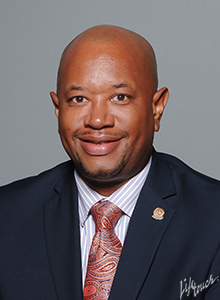Youth Court: Giving Students Ownership Over Restorative Discipline Practices
In this NAESP Center for Innovative Leadership video podcast, Andy Jacks and Hamish Brewer talk with Tennessee middle school principal Kevin Armstrong about giving students ownership over restorative practices with Youth Court.

Kevin Armstrong, executive principal of DuPont Hadley Middle School in Old Hickory, Tennessee, believes in the power of his students to make a difference through ownership. He puts this belief into action by giving students (some) control over the school’s restorative practices with what’s called Youth Court.
“How I equate student ownership is like stock in a company,” says Armstrong. “If we can get students to purchase stock in our company, which is our school, then they obviously have an investment. They want to check in on that stock to make sure it’s flourishing and growing.”
Youth Court puts a focus on restorative discipline. It’s been an effective way for students to “turn the corner with their behavior because they’re hearing it from their peers, not from us,” says Armstrong.
The Challenges:
- How do we give students ownership over their education?
- What is the most effective way to help students improve their behavior issues?
- How can we best execute restorative practices?
Principal Spotlight:
Kevin Armstrong
Principal, DuPont Hadley Middle School, Old Hickory, Tennessee
Twitter: @DrKDArmstrong
Instagram: @blkeduk8erA Nashville, Tennessee, native, Kevin Armstrong was began as a teacher, working his way through a doctoral degree in Administration and Supervision and onward to the principalship in the Metropolitan Nashville Public School System. He was recognized as an NAESP National Distinguished Principal for the state of Tennessee, and he currently serves on the NAESP Board of Directors as the middle level at-large director. Armstrong takes pride in being data-driven, an expert in school culture and climate, and a visionary leader of the middle school realm.
In this video, Armstrong highlights a program called Youth Court, a peer-to-peer system that’s been effective in helping students improve their behavior. You’ll learn ideas to:
- Start a Youth Court. How do you start a Youth Court? Do research on the program and determine what specific outcomes you want for your school, says Armstrong, and find a faculty member to take the lead. In any court, you need a judge, prosecutor, and bailiff, and that’s what a handful of students serve as in Youth Court. The students who run Youth Court are elected by teachers through an interview process and represent every grade level at the school. They’re not just the “good” students either; they’re selected because they value helping other people.
- Focus on restorative practices. Youth Court teaches students to take a look at what they did, why it was wrong, and who it harmed. Through the process, “they’re hearing it from their peers, so our kids are a lot more proactive when they see wrong is going on in the building,” says Armstrong. It’s not about nitpicking with kids; it’s about them understanding there are consequences for their actions. “Sentences” from the court rulings might include things like having to write a letter of apology or following a custodian to see what goes into keeping the school clean. “We want them to own their learning and own their behaviors,” says Armstrong.
Three Main Takeaways:
- Every disciplinary action is an opportunity for students to learn from their behaviors and make positive changes.
- “Beat the lie.” Get accurate communication home to parents and families before the students have a chance to give them inaccurate accounts of what happened.
- Peer-to-peer restorative practices can be more effective than an adult-to-student.
Share your strategy: How have you transformed a school space to celebrate students? Go to the NAESP CIL webpage to tell us—and you could be one of the next principals we profile.



